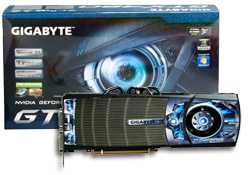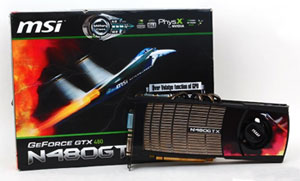About Gabe Rudy
Meet Gabe Rudy, GHI’s Vice President of Product and Engineering and team member since 2002. Gabe thrives in the dynamic and fast-changing field of bioinformatics and genetic analysis. Leading a killer team of Computer Scientists and Statisticians in building powerful products and providing world-class support, Gabe puts his passion into enabling Golden Helix’s customers to accelerate their research. When not reading or blogging, Gabe enjoys the outdoor Montana lifestyle. But most importantly, Gabe truly loves spending time with his sons, daughter, and wife. Follow Gabe on Twitter @gabeinformatics.
After my latest blog post, Jeffrey Rosenfeld reached out to me. Jeff is a member of the Analysis Group of the 1000 Genomes Project and shared some fascinating insights that I got permission to share here: Hi Gabe, I saw your great blog post about the problems in the lack of overlap between Complete Genomics and 1000 Genomes data. I… Read more »
I recently curated the latest population frequency catalog from the 1000 Genomes Project onto our annotation servers, and I had very high hopes for this track. First of all, I applaud 1000 Genomes for the amount of effort they have put in to providing the community with the largest set of high-quality whole genome controls available. My high hopes are… Read more »
There is nothing cooler than having something arrive that you have been excitedly waiting for: last week I got an email notification that my 23andMe exome results were ready. Actually, I got 3 emails that my exome results were ready. You see, I lucked out. It all began two years ago on DNA day when Hacker News reported that 23andMe… Read more »
Reading through the last release of AJHG I saw a couple papers mention that the putative rare variant they were investigating was “not present in over 10,000 control chromosomes from the EVS”. My first reaction was, “What? Do they mean the NHLBI 5400 Exome Sequencing Project? They only have 5,400 exomes not over 10,000! I wonder if there is some… Read more »
Today I ran into an interesting fact about how a prolifically used catalog of population controls classifies African Americans with potential impacts on research outcomes. The 1000 Genomes Project is arguably our best common set of controls used in genomic studies. They recently finished what was termed as “Phase 1” of the project, and they have been releasing full sets… Read more »
Type 2 Diabetes, Rheumatoid Arthritis, Obesity, Chrohn’s Diseases and Coronary Heart Disease are examples of common, chronic diseases that have a significant genetic component. It should be no surprise that these diseases have been the target of much genetic research. Yet over the past decade, the tools of our research efforts have failed to unravel the complete biological architecture of… Read more »
As I’ve mentioned in previous blog posts, one of the great aspects of our scientific community is the sharing of public data. With a mission of providing powerful and accurate tools to researchers, we at at Golden Helix especially appreciate the value of having rich and extensive public data to test and calibrate those tools. Public data allow us to… Read more »
In a series of previous blog posts, I gave an overview of Next Generation Sequencing trends and technologies. In Part Two of the three part series, the range of steps and programs used in the bioinfomatics of NGS data was defined as primary, secondary and tertiary analysis. In Part Three I went into more details on the needs and workflows… Read more »
A GPU can produce an enormous boost in performance for many scientific computing applications. Since we announced the availability of SNP & Variation Suite’s incorporation of GPUs to dramatically speed up copy number segmentation, we’ve received numerous inquiries on recommendations for what GPU to purchase. Unfortunately the technical terminology and choices can be a bit confusing. In this article I… Read more »
The advances in DNA sequencing are another magnificent technological revolution that we’re all excited to be a part of. Similar to how the technology of microprocessors enabled the personalization of computers, or how the new paradigms of web 2.0 redefined how we use the internet, high-throughput sequencing machines are defining and driving a new era of biology. Biologists, geneticists, clinicians,… Read more »
When you think about the cost of doing genetic research, it’s no secret that the complexity of bioinformatics has been making data analysis a larger and larger portion of the total cost of a given project or study. With next-gen sequencing data, this reality is rapidly setting in. In fact, if it hasn’t already, it’s been commonly suggested that the… Read more »
If you have had any experience with Golden Helix, you know we are not a company to shy away from a challenge. We helped pioneer the uncharted territory of copy number analysis with our optimal segmenting algorithm, and we recently handcrafted a version that runs on graphical processing units that you can install in your desktop. So it’s probably no… Read more »
Why should a genetic researcher care about the latest in video gaming technology? The answer is video graphics cards or Graphics Processing Units (GPUs). For certain computational tasks, a single GPU can perform as well as an entire cluster of CPUs for only a fraction of the cost. And because video gaming has grown into a highly competitive multi-billion dollar… Read more »
In the paper Runs of homozygosity reveal highly penetrant recessive loci in schizophrenia, Todd Lencz, Ph.D. introduced a new way of doing association testing using SNP microarray platforms. The method, which he termed “whole genome homozygosity association”, first identifies patterned clusters of SNPs demonstrating extended homozygosity (runs of homozygosity or “ROHs”) and then employs both genome-wide and regionally-specific statistical tests… Read more »







